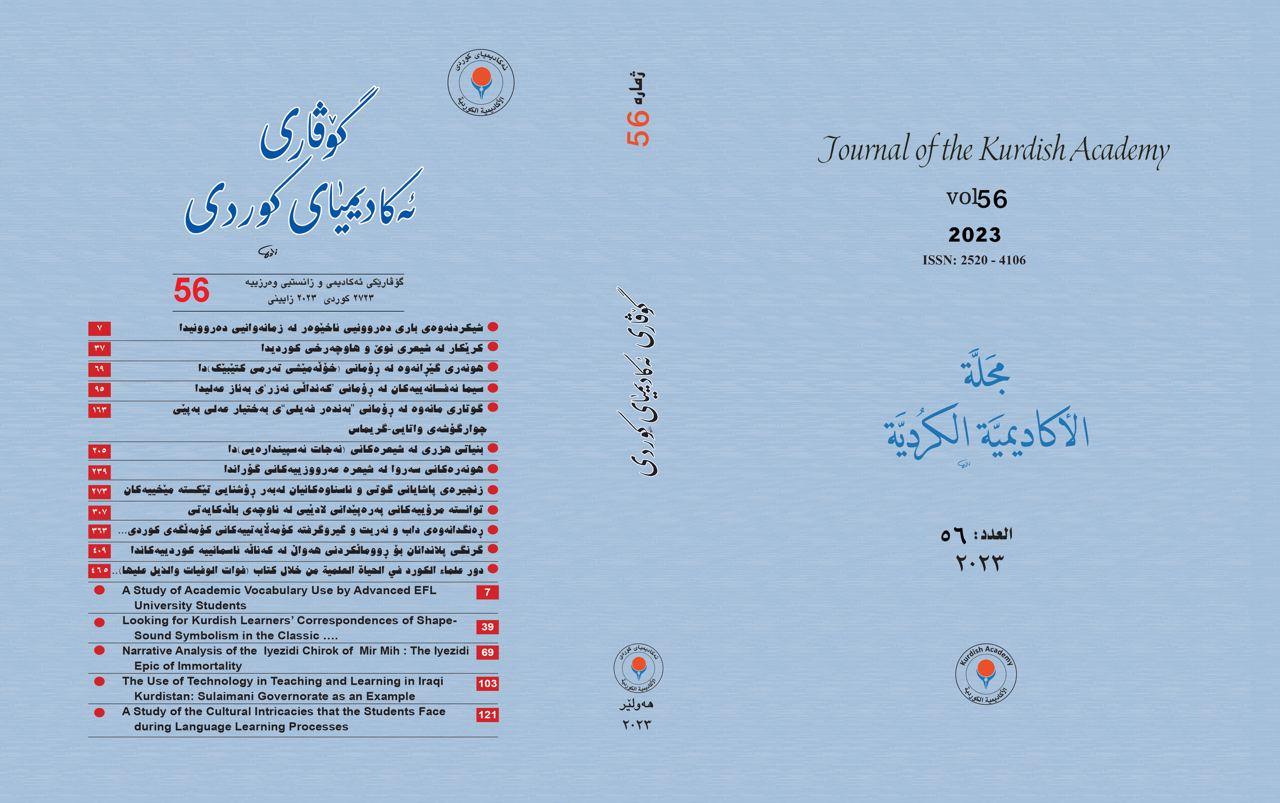ڕەنگدانەوەی داب و نەریت و گیروگرفتە كۆمەڵایەتییەكانی كۆمەڵگەی كوردی لە ڕۆژنامەوانيی كوردیدا لە عێراق (1958-1968)
DOI:
https://doi.org/10.56422/ka..56.440Keywords:
costoms and traditions, Journalist, community, reflect, beliefsAbstract
The period between 1958-1968 is considered an important period in contemporary history because of the political changes that occurred in South Kurdistan and the region, such as changes in the system of governance in Iraq and the September Revolution. There is no doubt that these incidents have an impact on the social aspects, customs and traditions of Kurdish society. especially freedom of the press at the beginning of the July 14, 1958 revolution, which led to the publication of a large number of newspapers and magazines, which played a role in spreading awareness and pointing to problems and wounds In the hope of finding a solution, event journalism mirrors the changes of its time, , especially the social aspects, including the customs and traditions of society in newspapers, because customs and traditions are directly related to people's lives. During this period, journalists have pointed out many beautiful traditions, but there were also some bad traditions that hindered the progress of society in the social field, such as believing in writings and fortune-tellers. Some of the traditions of marriage mentioned during this period, created many bad consequences for families that were a reason for the backwardness of Kurdish society, during this period, journalists were trying to promote and disseminate and raise the level of family awareness and the presentation of women's rights and the importance of raising children in a healthy and successful manner, have had their own influence and role in this regard.
The research includes four main topics: the first topic refers to the traditions of society and national beliefs, the second topic focuses on the family, the role and position of women, raising children and forming a successful family Games, holidays and social events are presented in the third chapter, while social problems are discussed in the fourth chapter. Finally, the results of the research are discussed





